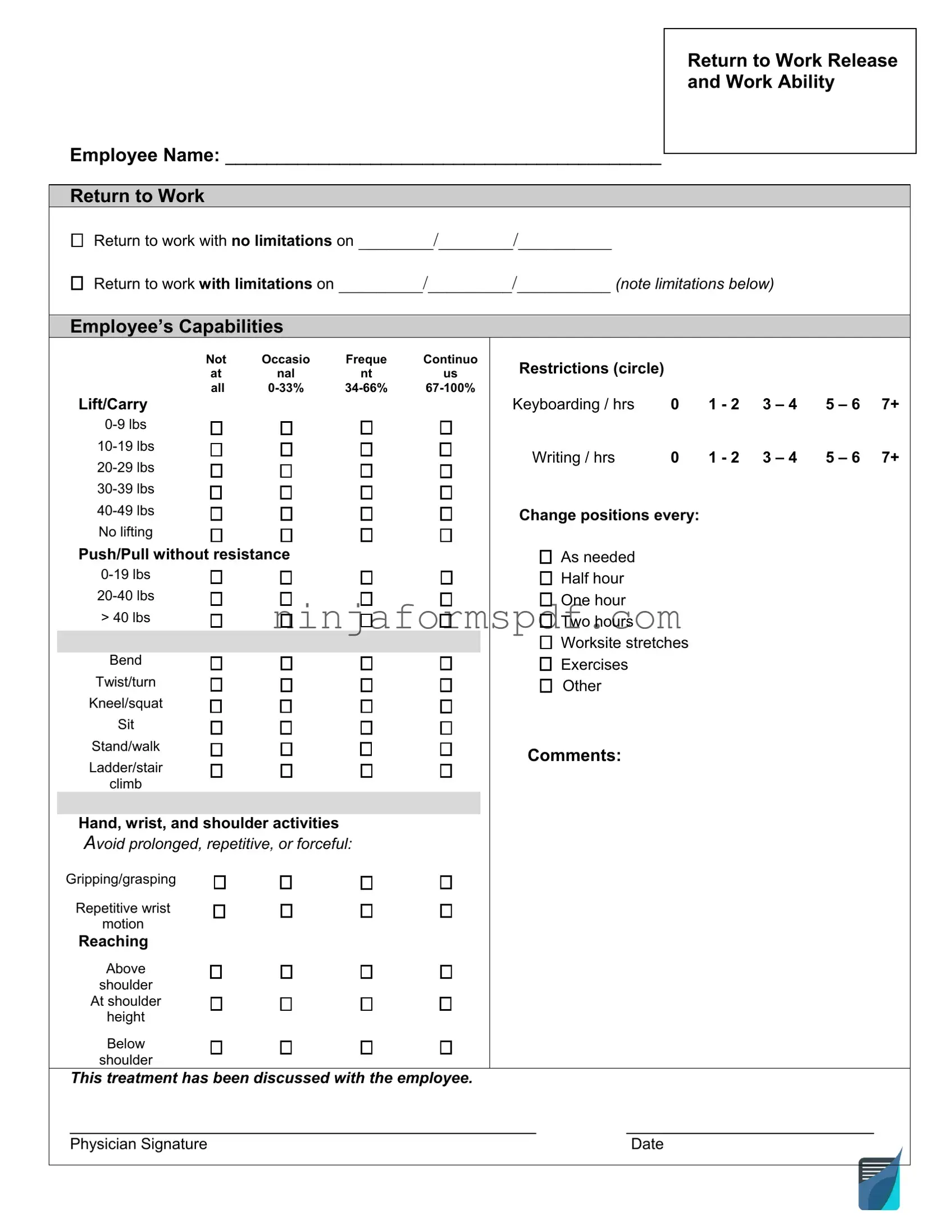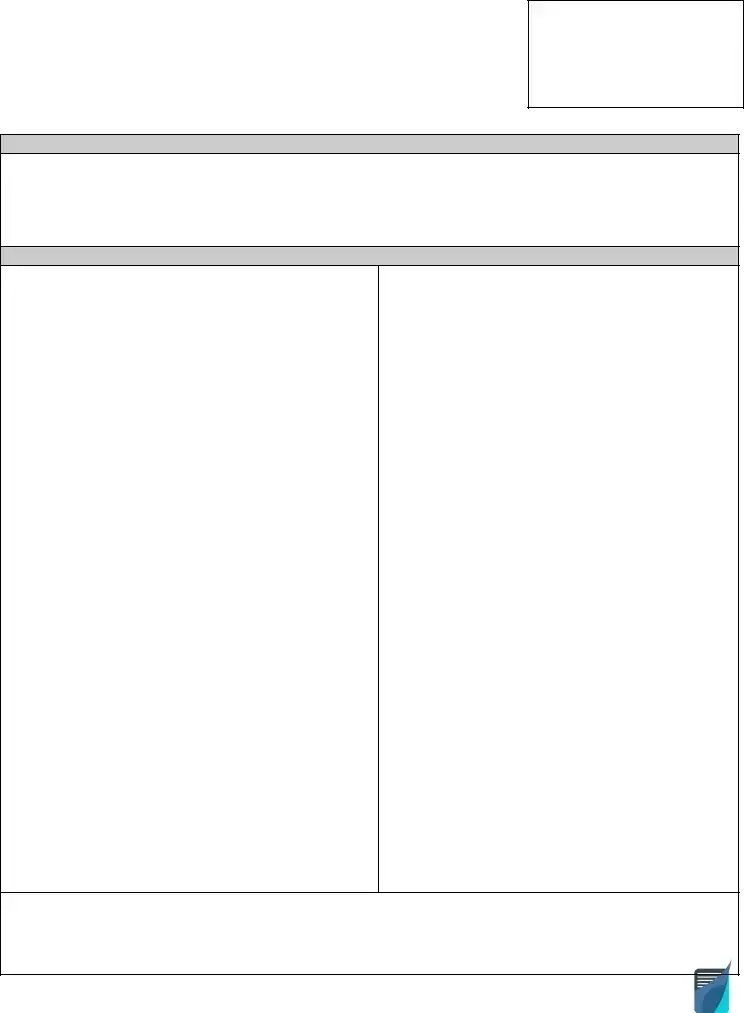A Work Release Form shares similarities with a Medical Release Form, primarily in the aspect of granting permission. Much like how a Work Release Form might authorize an individual to return to work under specific conditions after an illness or injury, a Medical Release Form allows the disclosure of an individual's medical information to designated parties. Both serve the purpose of providing necessary information to uphold the safety and well-being of the individual within the workplace or other settings.
Another document akin to the Work Release Form is the Liability Waiver. While a Work Release Form typically indicates that an employee is fit to resume work, potentially after a health-related absence, a Liability Waiver is used to acknowledge the risks involved in certain activities. By signing a Liability Waiver, an individual agrees not to hold an organization or party liable for any injuries that might occur. This similarity lies in the protective function for organizations, mitigating the risk of legal issues arising from workplace injuries or activities.
The Parental Consent Form has a resemblance to the Work Release Form as well, especially in their roles in authorizing an action or participation. Specifically, a Parental Consent Form is necessary when a minor wishes to engage in certain activities or requires services, ensuring that their guardian permits their involvement. The crucial element they share is the requirement for explicit permission from an authority figure before proceeding with an activity or service.
Comparable to the Work Release Form is the Return to Work Form. This form is particularly used after an employee has been on leave due to illness or injury, to document their readiness and capability to resume their duties. The core similarity lies in the verification process that ensures an employee's fitness for work, focusing on their health and safety. Both forms are integral in facilitating the transition back to the workplace while considering the well-being of the employee.
An Accommodation Request Form is also closely related to a Work Release Form. This form is primarily used by employees who necessitate adjustments or modifications to their work environment due to health conditions or disabilities. Just as a Work Release Form might specify conditions under which an employee can return to work, an Accommodation Request Form seeks to ensure that these conditions are met, emphasizing the importance of a supportive and accessible work setting.
The Employment Verification Form bears resemblance to the Work Release Form in the context of employment and the validation procedures they entail. An Employment Verification Form confirms an individual's employment status, position, and salary. The similarity lies in the formal acknowledgment by an employer of an employee’s work-related status, whether it’s their capability to perform tasks following a health concern or their employment particulars for official or financial purposes.
A Fitness for Duty Certification is analogous to a Work Release Form in its purpose to assert an employee’s health condition in relation to their job responsibilities. This certification specifically confirms that an individual is medically and physically able to perform their job duties safely after an absence due to health reasons, mirroring the Work Release Form's function of ensuring an employee's readiness to return to work, safeguarding both their health and workplace productivity.
Last but not least, the Job Safety Analysis Form parallels the Work Release Form by concentrating on the avoidance of work-related injuries and ensuring a safe work environment. This form assesses specific job tasks to identify risks and develop preventive measures. The tie to a Work Release Form comes through the mutual goal of promoting safety and well-being in the workplace, by making certain that an employee is returning to a safe environment or adjusting tasks to fit their health status.

